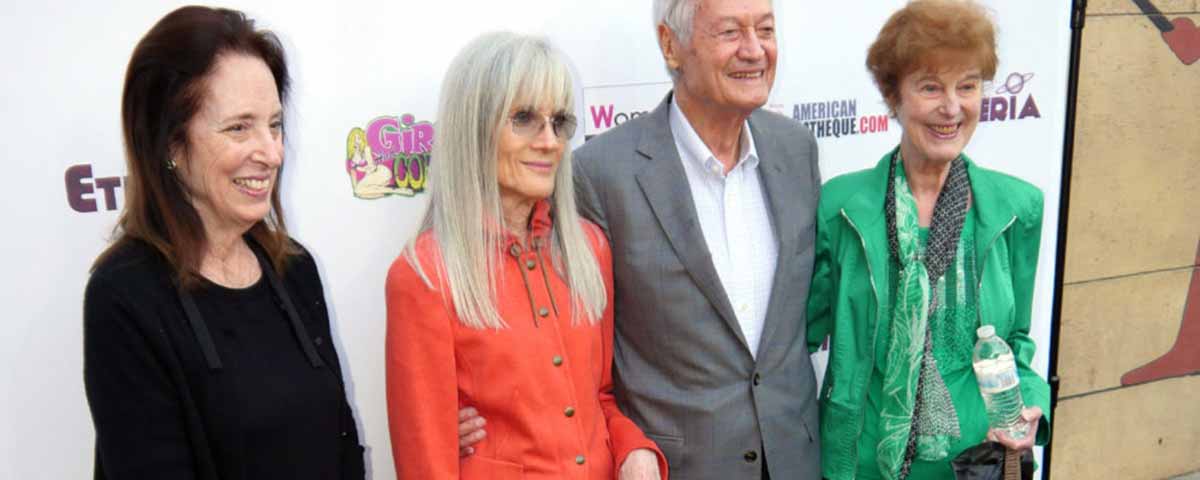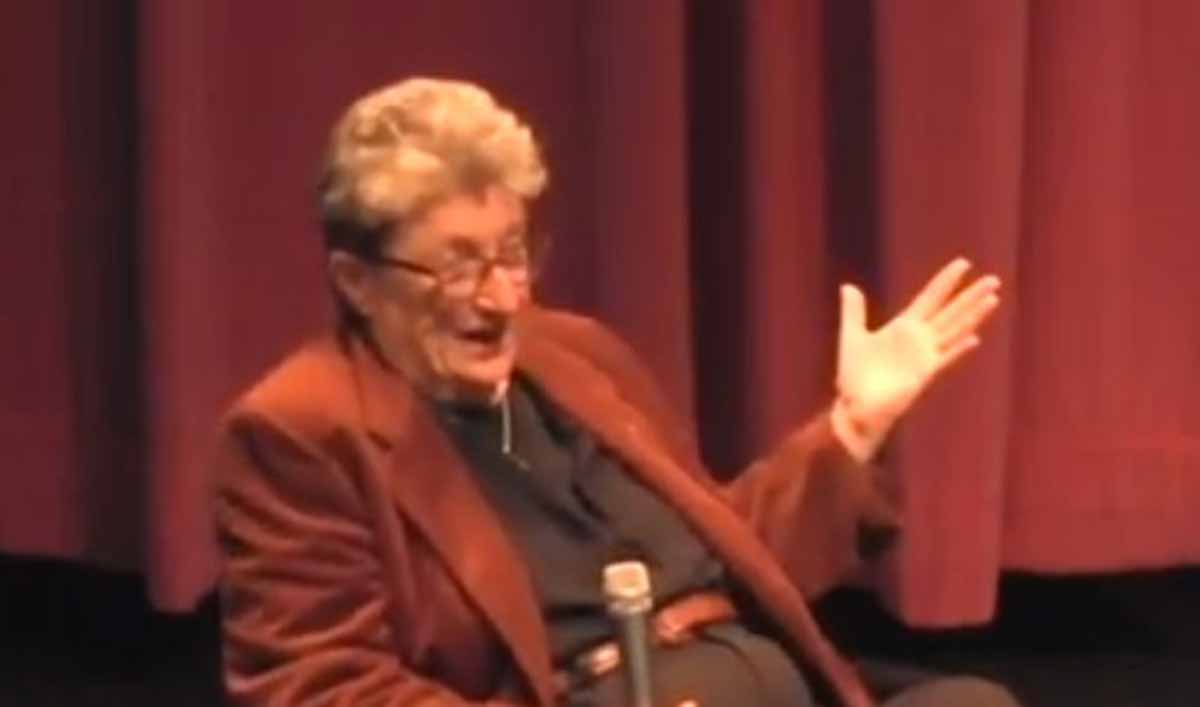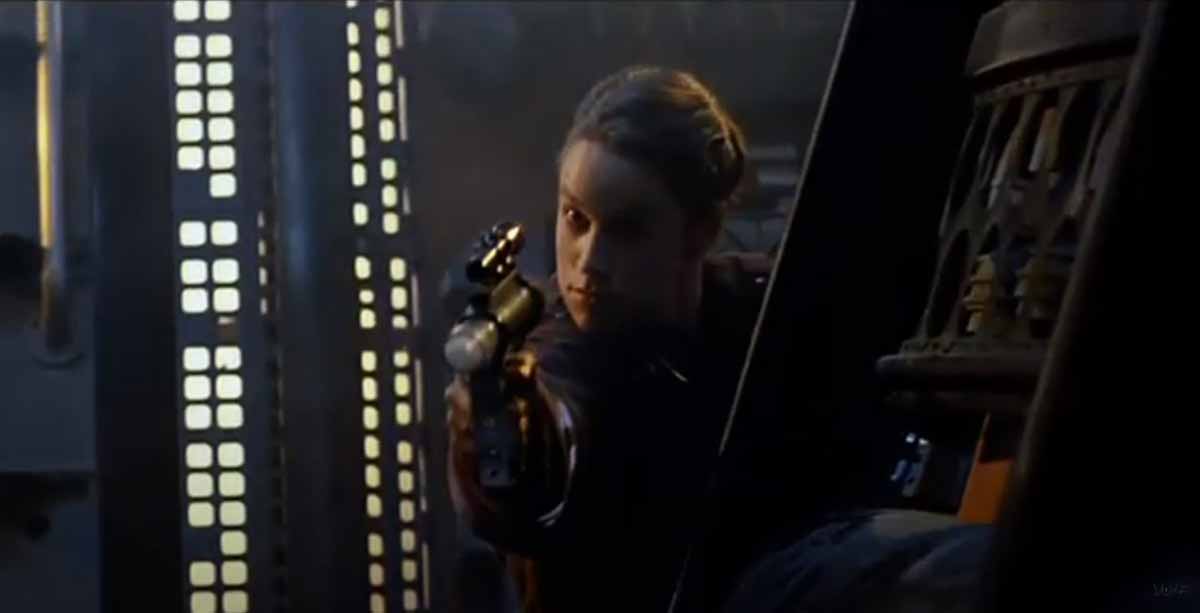After the arrival of sync sound recording brought a virtual purge of the otherwise plentiful female directors of the silent era, the few women that were able to make and release films in America could be classified in three categories. Those who had already established their strengths in other tasks, like Dorothy Arzner as an editor, Ida Lupino as an actress, or Elaine May as a writer/comedian. Then, those who had the benefit of independent reserves that could either self-finance their projects or attract private investment, like Shirley Clarke or Juleen Compton, bypassing the studios and retaining autonomy, but reaching mostly niche audiences. And finally, those who either had celebrity, such as Joan Rivers or Nancy Walker, or close talent relationships, as Jane Wagner, who were invited to direct a feature despite having no outward inclination to that discipline, effectively jumping the queue. And even as the ‘70s transitioned to the ‘80s, and more women, many from outside America, began to get hired, they were under the microscope so often that if their projects weren’t big hits, or they so much as disagreed with a male producer, they would end up in “director jail” and would be struggling yet again to make another film.
Since it was difficult for ambitious women to get any initial directing experience, let alone enough to satisfy the arbitrary demands of most male studio heads, alternative circles to ply their trade were found. Many opted for the documentary world, where figures like Barbara Kopple and Julia Reichart thrived. Others carved a niche in television, with Lela Swift directing hundreds of hours of soap operas and June Reig creating innovative children’s programs for NBC. Some found a home in industrial and educational shorts, and occasionally, leaders in the field as Joan Micklin Silver and Linda Feferman were able to transition to theatrical features.
Then there is the odyssey of artists like Mary Ann Fisher. Hers is a name not often bandied about when discussing the history of women in film. She only directed one feature, and most of the movies she produced are not well-known perennials. But she is a compelling example of the decades of opportunities that female creatives were given in an unlikely environment: the Guns, Breasts, and Explosions driven, low-budget filmmaking factory of producer Roger Corman.

Photo courtesy of Etheria Film Festival
What has been frequently noted about the three decades plus of Corman’s career as an independent studio operator and distributor, through his various companies New World, Concorde, New Horizons, and beyond, was that he, along with his wife and regular house producer Julie Corman, provided a valuable fourth option, which was to have an ongoing company of women in his organization: some regularly directing, and some laboring in other positions of responsibility on the set or in post-production, then given opportunities to direct, all with strict dictates about budgets and schedules, but without the pressure of having to generate precedent-setting box office revenue. Not counting pickups from other producers, from the years 1971 – 2000, the Cormans’ various companies underwrote films from 19 female directors. For comparison, that’s more than Universal, more than WB, more than MGM and United Artists, before and after their merger, more than Disney, even spread out among their Touchstone and Hollywood imprints, and only beaten by combining all the divisions of Columbia (with TriStar, Screen Gems, and the home video arm) and 20th Century-Fox (with Searchlight), and by Paramount cleanly. Corman’s motives were not wholly altruistic; keeping production and talent costs low was always the primary interest, and he knew that skilled women at a disadvantage penetrating the majors would likely be willing to work under his tough conditions. But he did have a genuine desire to nurture diverse new talent, and several of the women associated with his productions have gone on to varying levels of success, some still actively employed in the present, including Amy Holden Jones, helming the TV series “The Resident,” and Katt Shea, whose new film Rescued by Ruby has recently premiered on Netflix. As the late Peter Bogdanovich once mused, “Roger is the type of person who asks if you know how to swim, then throws you in the water.”

In the beginning years of New World Pictures, an artist who had already amassed sweat equity before joining the Corman collective was Barbara Peeters. (Stephanie Rothman was the first woman to have a movie released by New World, The Student Nurses in 1970, but she already had a working history with Corman dating back to his days producing films for American International.) An Iowa native with an interest in theatre arts who, on a coin flip, moved to California to further her pursuits, Peeters took classes at Pasadena Playhouse, and in 1967, acted and co-wrote (with classmate Byron Predka) an adults-only women-in-prison film, Caged Desires, released in 1970. She then established a friendship with actor/director Richard Compton, working with him as costume designer on the 1969 film The Fabulous Bastard from Chicago, which he wrote; he hired her as an actress on his directorial debut The Gun Runner that same year, and as a script supervisor on his next film Angels Die Hard in 1970, which was acquired by New World. On the advice of Compton, Peeters made a deal that same year to write and direct her first film, a lesbian melodrama called The Dark Side of Tomorrow aka Just the Two of Us. Spurred by conversations she had with Angels Die Hard co-star Rita Murray, Peeters composed a story for a biker-themed revenge drama, Bury Me an Angel, which Murray and her father agreed to independently produce. Bury Me was acquired by Corman in 1972, beginning their association.
Through the eight years of her residency at New World, Peeters held several positions. For Jonathan Kaplan, later to direct The Accused, she served as production manager for Night Call Nurses and second unit director for The Student Teachers. She also handled second unit for Candy Stripe Nurses with Candice Rialson, Eat My Dust with Ron Howard, and Moving Violation with Kay Lenz and Eddie Albert, earning name-checking and praise on the latter two films in reviews printed by Variety. And she would direct twice for the studio, Summer School Teachers in 1974, and Humanoids from the Deep in 1980; in addition, outside of New World, she also directed the 1978 comedy Starhops, originally written by Stephanie Rothman with plans of her directing it, which carried over the three-girl-story format made popular by New World, and featuring frequent New World actors Jillian Kesner and Dick Miller. In a February 1978 L.A. Times article by Linda Gross on women working in exploitation film, Peeters spoke fondly of Corman, saying, “He is always available and he doesn’t hire you unless he trusts you. As long as you open big and close big and try to resolve three stories in the end, Roger lets you do what you want. Just be sure you put in either a sex scene or an action sequence every 15 minutes.”
Unfortunately, Peeters biggest theatrical hit also marked the acrimonious finish of her previously cordial dealings with Corman. Recovering from a bout with melanoma, Peeters agreed to direct Humanoids from the Deep, a sea monster attack tale conceived by talent manager turned producer Martin B. Cohen, and scripted by historical writer William Martin (under the pseudonym Frederick James). As she told blogger Alan Rosenberg in 2011, “He offered it to all the boys, but the boys turned it town. It was a terrible script. So he offered it to me.” Nonetheless, she ventured to Mendocino to shoot, envisioning making it a wink to classic ‘50s sci-fi creatures scaring bikini girls adventures. (One of the women in peril, Linda Shayne, would herself write and direct for Corman years later.) After turning in her cut of the film, Cohen’s production team informed her additional scenes would be shot without her, ostensibly to pad the running time. It was only as the film reached theatres that Peeters and leading start Ann Turkel saw that additional violent scenes involving the creatures had been added, which neither of them approved of. In addition, for working on a non-union production, the DGA fined Peeters in excess of what she had been paid for the job. After unsuccessfully attempting to have their credits removed, they went public with their grievances, and even though most of the blame was assigned to the on-set producer Cohen, Corman’s reputation as a female-friendly benefactor took a substantial hit; Peeters remarked ruefully in 2010, “[The] dollar in fine art means a lot to Roger, [and] the future of his children, and the size of his house, and the quality of his furniture, means more than his word.”
Indeed, there were other female directors who did not gel with Corman’s tenets or with him. Shirley Clarke was briefly courted to direct Robert Thom’s screenplay Crazy Mama (which ultimately was made in 1975 with Jonathan Demme in the chair), and after meeting him, Clarke was not impressed, recalling in 1985, “He didn’t know who I was at all…He didn’t trust me, that’s for sure…I was a representative of tokenism. I was relied on to be the woman filmmaker.” Lisa Hunt, who had been in UCLA’s film program with Alexander Payne, found herself in a similar situation to Peeters when her 1991 film Angel in Red (aka Uncaged), itself a loose remake of Joan Freeman’s 1985 New Horizons release Streetwalkin’, was deemed to have not enough violence and nudity by its producer Mike Elliott, and additional scenes were shot without her consent, leading her to remove her name from the credits, and, as she describes in her IMDb bio, crush a cigarette into his office carpet. And when former house composer Odette Springer presented what he felt was an unflattering depiction of him in her 1998 documentary Some Nudity Required, he attempted to sue her for obtaining the interview and footage from his films under false pretenses; he did not prevail. It would be dishonest to conflate the laudable results of his legacy into outright hagiography when, as stated, hiring and promoting women creators was motivated as a means to spend less money just as much as an interest in elevating new talent. But it would be just as incorrect to dismiss those results because of the occasions where minds did not mesh. Let’s just say it’s oddly appropriate that one of the prestige titles in New World’s production history was called I Never Promised You a Rose Garden.

The aforementioned Mary Ann Fisher is among the talent who did benefit from working in Corman’s incubation program. Fisher was a Stanford graduate in child development who became his assistant in 1977, and by 1980, at age 25, became Head of Production at New World. Her specialty at the studio quickly became science-fiction, as she served as a producer liason for John Carpenter’s Escape from New York (which used several New World visual effects artists), an associate producer on Battle Beyond the Stars and Forbidden World, and a production manager on Galaxy of Terror and Space Raiders, doubling as a second unit director on the latter as well. She even acted in Android as a space cop. It makes sense then that her first directorial outing was Lords of the Deep, a cash-in on the popular late ‘80s wave of underwater-themed adventures as Leviathan, DeepStar Six, and The Abyss, whose writer/director James Cameron had previously been an effects artist for New World. In further serendipity, Robert and Dennis Skotak, who did effects work for The Abyss and Aliens, worked on Lords. The film later became notable as an early effort for longtime Steven Spielberg cameraman Janusz Kamiński, who was briefly a second unit D.P. on the shoot until he was let go over a production dispute and left uncredited. Fisher has not yet directed another film, but she continued producing for Corman until 1999, including supervising operations at the Irish Concorde Anois studios he briefly operated for five years in Connemara, Galway.
This was the pattern for other women who made their way through that Venice compound over its prime years of activity. Tina Hirsch edited major New World hits as Big Bad Mama, Death Race 2000, and Eat My Dust, then had the unique distinction of becoming a regular editor for fellow alumnus Joe Dante on his studio pictures, and coming back to Corman to direct a takeoff of Dante’s hit Gremlins called Munchies. Kristine Peterson had been a first assistant director on Chopping Mall and a second unit director on The Drifter before making her well-received thrillers Deadly Dreams and Body Chemistry. Catherine Cyran wrote a sequel to Amy Holden Jones’ Slumber Party Massacre and the rewrite of Streetwalkin’ that became Angel in Red, and then advanced to direct thrillers (Sawbones, Hostile Intentions) and children’s adventures (White Wolves); post-Corman, she is now a prolific maker of family fare and holiday movies, including Christmas Do-Over, Homecoming for the Holidays, and three The Prince & Me sequels. Whatever their initial job, a woman with a Corman-based CV could get a chance to block scenes and call “Action!”
The New Beverly thus salutes all the women who put story to celluloid at 600 S. Main St., Venice, California; Killroe Spiddall and Tally, Galway; and all the stolen locations in between: Stephanie Rothman, Barbara Peeters, Tina Hirsch, Amy Holden Jones, Penelope Spheeris, Joan Freeman, Carol Frank, Zane Buzby, Deborah Navarra-Brock, Katt Shea, Linda Shayne, Kristine Peterson, Mary Ann Fisher, Sally Mattison, Lisa Hunt, Catherine Cyran, Gwyneth Gibby, Victoria Muspratt, and Rachel Samuels. For whatever conducive or combative experience you went through to get your films made, we continue to happily enjoy watching the results of your hard work.


